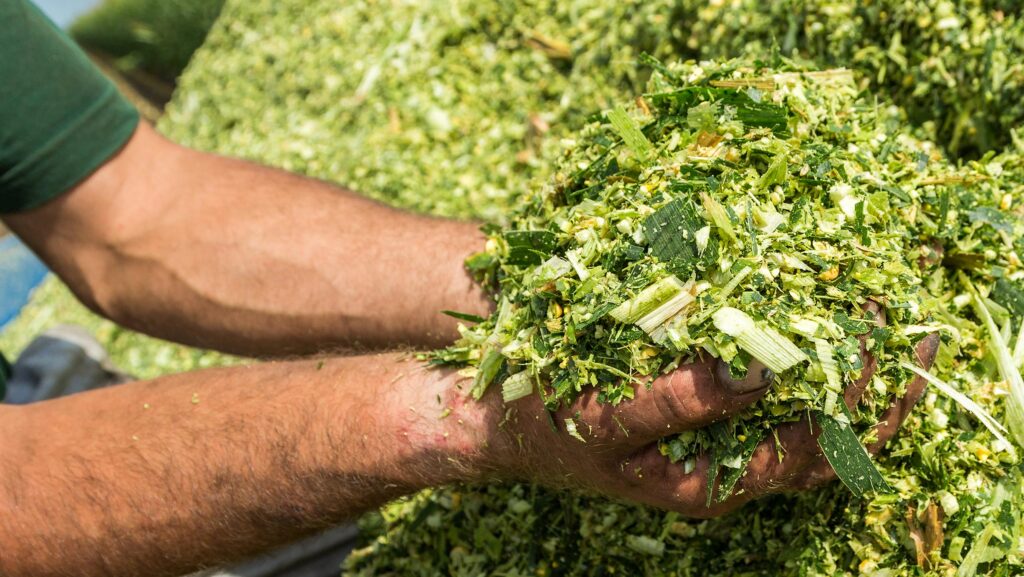Maize dry matters fall 3% in varied year
 © Adobe Stock
© Adobe Stock A slow growing season has been blamed for a 3% fall in maize dry matter levels in a nutrition company’s published forage sampling data.
Trouw Nutrition GB’s first 750 analyses have averaged 30.7% dry matter (DM) after a wet spring and cooler summer increased the risk of crop immaturity and delayed harvests.
Nacia Bonnick, ruminant technical adviser at Trouw Nutrition, said a typical year would return DM figures of 33-34%.
“This will clearly have an impact on inclusion rates in diets and management of forage stocks over winter,” she said.
See also: Livestock farmers battle bad weather to bring in maize
Mixed results
However, maize production varied widely this year, and some very good forages have been produced by growers.
For example, Trouw’s published figures (see table below) show that metabolisable energy and crude protein are very similar to 2023, and starch figures are slightly higher than last year.
Trouw maize silage analysis 2022-24 |
|||
|
|
2022 |
2023 |
2024 |
|
|
Average |
Average |
Average |
|
Dry matter (DM) (%) |
33.9 |
33.6 |
30.7 |
|
Crude protein (% DM) |
7.9 |
7.9 |
7.9 |
|
Digestibility value (%) |
72.4 |
69.9 |
70.9 |
|
Metabolisable energy (MJ/kg DM) |
11.4 |
11.0 |
11.1 |
|
Starch (% DM) |
35.0 |
27.8 |
28.4 |
|
Starch degradability (%) |
77.5 |
79.7 |
80.8 |
|
Bypass starch (g/kg DM) |
77.6 |
55.4 |
53.5 |
|
Neutral detergent fibre (% DM) |
38.8 |
40.0 |
42.1 |
|
Lignin (g/kg DM) |
23.2 |
40.1 |
34.2 |
|
pH |
3.8 |
4.0 |
3.9 |
|
Rapidly fermentable carbohydrates |
212.7 |
205.6 |
209.7 |
|
Total fermentable carbohydrate |
510.6 |
498.3 |
504.7 |
|
Dynamic energy (MJ/kg DM) |
6.9 |
6.5 |
6.7 |
| Source: Trouw Nutrition GB | |||
“The growing season has clearly impacted many crops, and while the average analysis is similar to recent years, we are seeing a greater proportion of poorer analysis, indicating some feeding challenges,” said Nacia.
Feeding advice
She advised the following points for feeding this year:
- Take care not to overload the rumen with starch to avoid acidosis risk
- Regularly review rations. If energy increases, can you potentially save on feed costs?
- Account for higher propionate yield if the silage is higher in dynamic energy (the amount of energy available to the cow) (DyNE), and utilise more energy from your silage – this year, neutral detergent fibre is higher, lignin is lower, and DyNE is up on the year at 6.7 MJ/kg DM.
- Aim to get clamps analysed for silage quality every month
- Check for mould on the clamp – mycotoxin risk is higher this year
- If starch degradability is higher, crops will need regular monitoring to allow steps to be taken to mitigate any acidosis risk.
